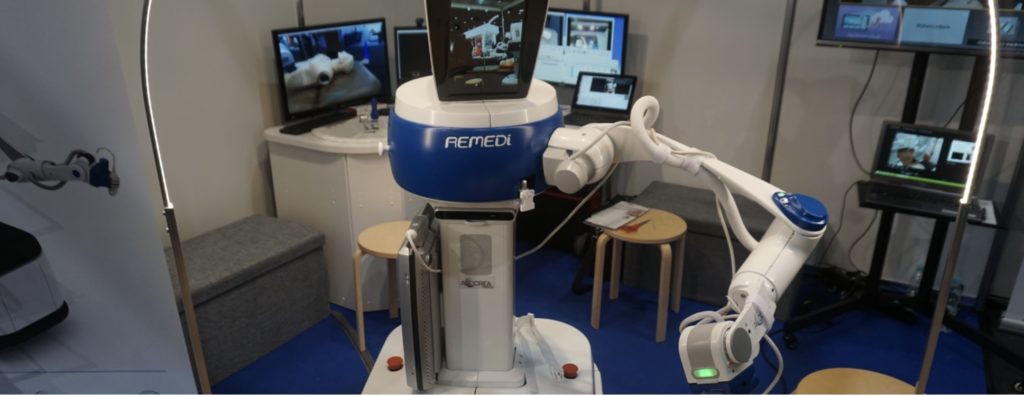I had my first robot doctor’s visit.
Well, I’m the one who visited. But a robot did the doctoring. In fact, the entire visit was without human contact, a first for me. And the experience was seamless — save for near-contact with a human being, who nearly fucked the whole thing up.
The occasion was a CAT scan my sentient doctor needed. But medical imaging is as expensive as a Marvel motion picture, just with an hour-long wait. And no popcorn.
The exorbitant cost forces myriad patients to reserve a spot in line for what amounts to an IMAX X-ray machine. On the day I visited, there a dozen patients, some on crutches, some in slings, some with a belly full of baby.
The night before, I looked over the electronic pre-exam instructions for a non-contrast CAT-scan: Bring insurance, a mask and a stomach emptied of a four-hour fast, including water.
As instructed, I showed up an hour early with the proper criteria. After finishing the paperwork — slid beneath a ceiling-high Covid shield that encapsulated the reception area of the waiting room — I took a seat with 45 minutes to spare.
About 10 minutes later, a woman came out from behind the section area. She wore a mask and gloves as she delicately walked a plastic cup brimming with…something.
“Hi Mr. Bowles,” she said in a friendly tone. ”You need to drink this. It’s contrast for the scan.”
I leaned back in my chair. ”I think mine is a non-contrast scan.
She stiffened and turned. ”I’ll take another look at your file,” and disappeared behind the desk.
I would not hear from her again, to neither confirm or deny whether I was supposed to drink…something.
An hour later, a…tech? nurse? told me to lay down on a gurney hooked to a large digital display that sat over a five-foot(?) ring that flashed lights and featured a giant, spinning lens.
“Put your hands over your head and listen for the instructions,” he said, politely. When I did, I heard the click of the iron door behind him.
It took a minute, but then a calm male voice. ”Hold your breath for three seconds,” he said. I couldn’t help but notice that the ”doctor” had a male voice, unlike Alexa, Siri, GoogleHome, Amazon and just about any A.I. you’d like to do secretarial tasks.
So I took a breath. A large hold-breath emoticon lit up over the ring, and the bed slid into the ring, which spun like an auto-focus camera looking for the target. The bed slid back, and a breathe emoticon lit up.
So I breathed. The process, twice more. The metal door clicked.
“Okay, we’re done,” he said, again politely. ”The requesting physician should have results in two to three days. Thank you.”
I dressed and walked out. I had registered at a new medical center, undergone a procedure and been discharged without human interaction. Thankfully, because the human interaction was the only near-glitch in the day.
I’ve heard much sturm and drang lately over the rise of Artificial Intelligence and the dark specter it casts the fate of humanity. But I think that fear is misplaced.
Look at the real source of human suffering, through just the headlines of today. It’s not natural disaster, famine or disease, and it won’t come attached to Artificial Intelligence like email malware.
Math adds up; that’s why there’s an equal sign. To err is human; that’s why there’s us. We’re in the way.
The real existential threat facing us is Human Intelligence.
There must be an app for that.

